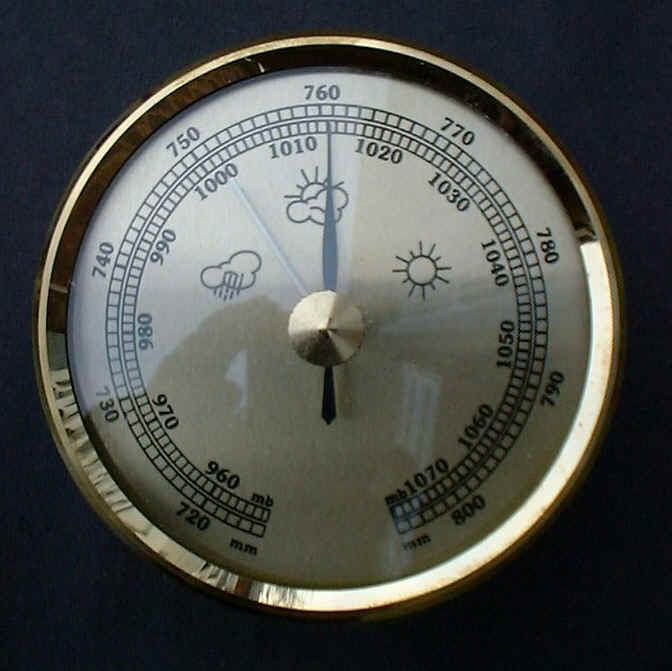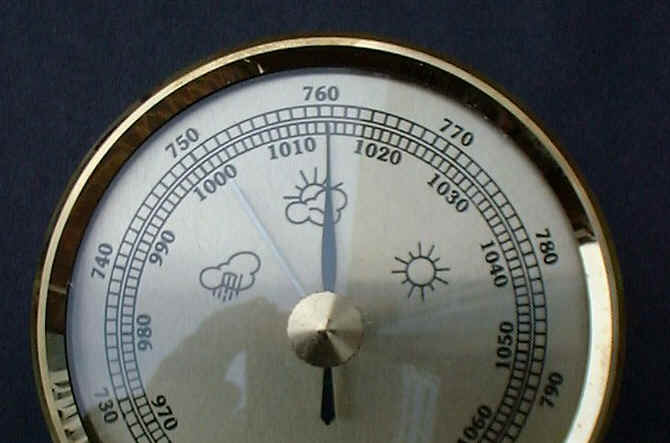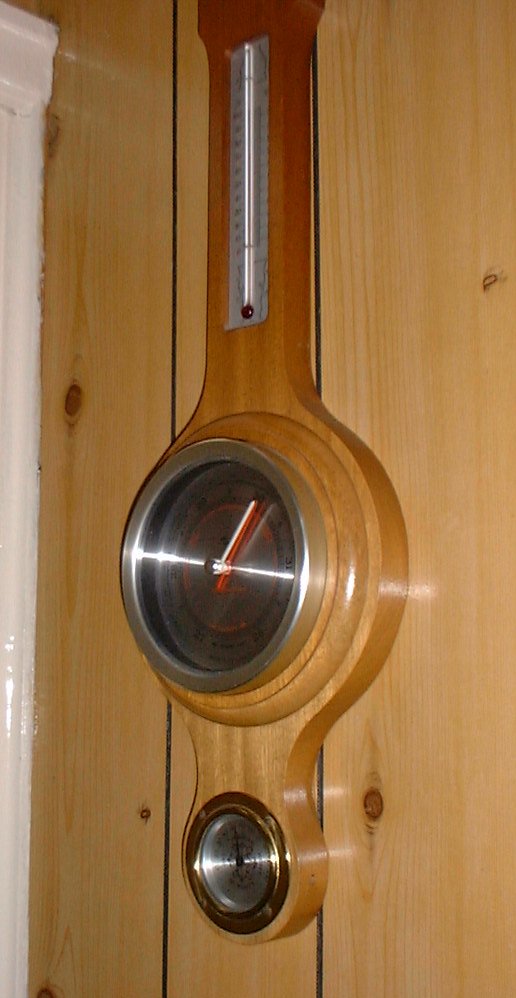Air Pressure
Air Pressure is a very important feature of weather systems. Monitoring its state and its changes gives an insight into what the weather will be like in the near future. Air pressure is the current weight of the air around us. It can be different in different places, and can change. On a weather forecast the air pressure can be shown by black lines called isobars. Weather forecasters often use the words 'high' or 'low' to describe the air pressure.
To see more about this topic go to the More About Air Pressure page. You might also like to have a go at the Air Pressure Quiz.
When you have finished reading about this you may want to return to Collecting Data.
Air PressureThe barometer is a delicate instrument for measuring air pressure.
This is best located somewhere where it can be looked at
and where it will not get damaged. It needs to be indoors,
not in the Stevenson screen. They are often located by an
outside door. |
|
MillibarsThe scale which weather watchers use is calibrated in millibars (mb) or hectopascals
(hPa). One hPa = one mb. The pressure readings in this country
can range between 950mb and
1050mb.
For the barometer to go to these extremes is unusual. The readings
are more likely to go between 970mb and 1030mb The brass
knob in the middle controls the short shiny indicator. This
pointer can be moved to align with the indicator. When the
needle then moves, you will be able to see if the pressure
has gone up or down. |
|
Taking ReadingsOn this barometer the inner scale is the millibar calibration. The outer readings
are not being used. Tap the barometer gently and note the direction
of movement (up or down). It is the amount of movement in a
short time that indicates the type of weather that is to come.
Take the reading in millibars after tapping the glass. See how this is done in the video on the right. Did the air pressure rise, fall or stay the same? |
|
Rising or Falling?Generally the speed of change in air pressure is of interest. If the instrument
shows a sudden fall in air pressure then it is likely that
the weather
will
be stormy. If the instrument remains constantly high, then
it indicates little change, especially in the summer. |



